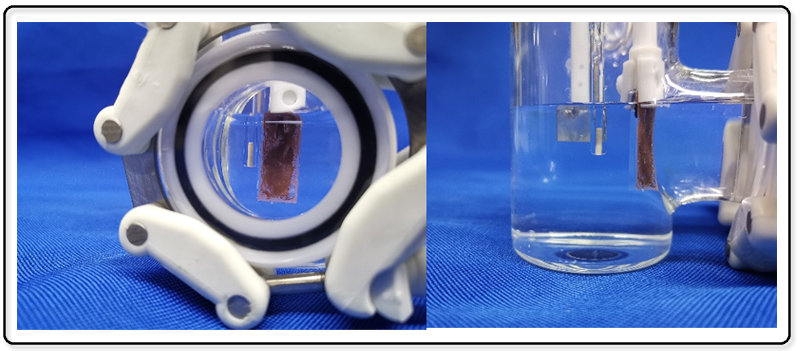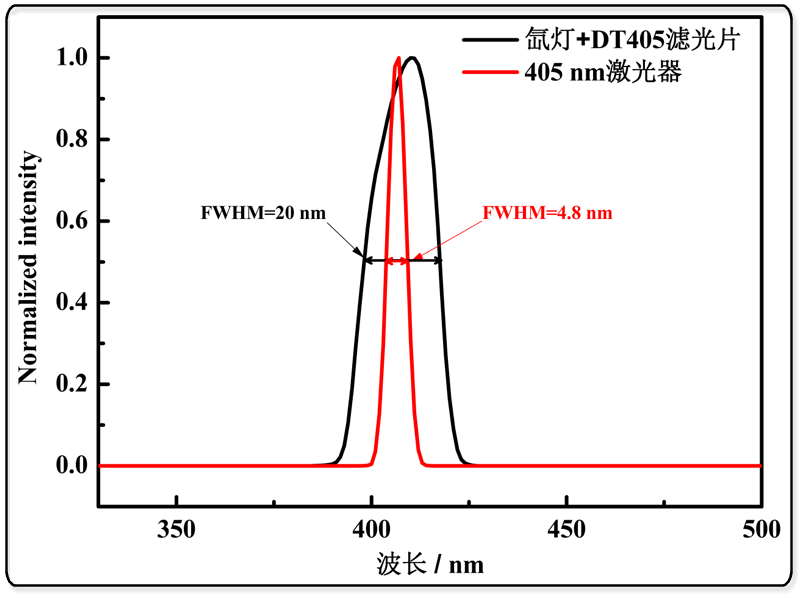Originality is hard-won. If you wish to reproduce this article, please contact the staff and include a proper attribution to the source in the reproduced article, otherwise, it will be treated as infringement!
Solar energy conversion efficiency is a primary parameter in assessing the process of photocatalytic water splitting and serves as a crucial indicator of the performance of the photocatalytic water splitting system. Currently, Incident Photon-to-Electron Conversion Efficiency (IPCE) is one of the four main ways to express the photocatalytic water splitting system. IPCE can be considered an analytical diagnostic efficiency and can provide information about factors influencing the efficiency of the photoelectrode reaction[1].
In the photoelectrocatalytic three-electrode reaction system, IPCE is used to characterize the relationship between the photoelectrode reaction efficiency of the material and light power, wavelength, and electrode potential.

Figure 1: Photoelectrocatalytic Three-Electrode Reaction System
◆Definition and Calculation Formula
IPCE is defined as the ratio of the number of electrons Ne generated in the external circuit per unit time to the number of incident monochromatic photons Np per unit time. The calculation formula is as follows:

I: External circuit current value (A)
h: Planck's constant (6.62×10-34 J·s)
c: Speed of light (3.0×108 m/s)
e: Charge of a single electron (1.6×10-19 C)
E: Light power received by the electrode (W)
λ: Incident light wavelength (m)
The simplified form is:

Special Note:
① E represents the light power received by the electrode, measured in W. In calculations for AQY and STH, the light power density, measured in mW/cm2, is used.
② When the spot size matches the size of the electrode, there's no need to consider uneven spots. However, if uneven light sources like xenon lamps are used, the average light power of the spot needs to be calculated. Measurement of light power density for uneven spots will be introduced separately in the future.
◆Measurement Method From formula (2), it's clear that calculating IPCE requires confirming the external circuit current value I, the light power received by the electrode E, and the incident light wavelength λ.
① External circuit current value I Under illumination conditions, the photoelectrode material generates photocurrent, which can be measured at different potentials using an electrochemical workstation. As the electrode material is a conductor/semiconductor, the current is not zero under non-illuminated conditions (I_dark=0). To ensure accuracy, when the dark current is significant, baseline subtraction should be conducted. That is, under the same potential, determine the photoelectric current and dark current, and then subtract the dark current from the photoelectric current. That is, I=Ilight-Idark.
② Light power received by the electrode E, incident light wavelength λ To ensure accuracy, a narrow-band light source should be chosen, i.e., FWHM≤10 nm full width at half maximum (FWHM)[2]. It is recommended to use a single laser light source or single-wavelength LED light source.

Figure 2: Spectrum of Xenon Lamp Source with 405 nm Bandpass Filter and 405 nm Laser
[1] Li C., Solar Conversion Science and Technology[M]. Beijing: Beijing Science Press, 2020: 148
[2] Xi'an Jiaotong University. GB/T 26915-2011 Energy Conversion Efficiency and Quantum Efficiency Calculation of Solar Photocatalytic Water Splitting Hydrogen Production System[S]. Beijing: China Standard Press, 2012: 3
The above content is a translation and summary based on reference sources. As my proficiency is limited, please feel free to correct any mistakes.
[1] 李灿, 太阳能转化科学与技术[M]. 北京,北京科学出版社, 2020: 148
[2] 西安交通大学. GB/T 26915-2011太阳能光催化分解水制氢体系的能量转换效率与量子效率计算[S]. 北京: 中国标准出版社,2012: 3